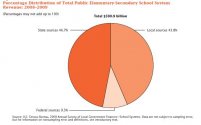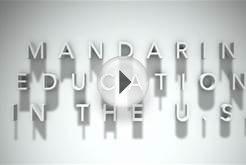Public Education in the United States, programs of instruction offered to children, adolescents, and adults in the United States through schools and colleges operated by state and local governments. Unlike the nationally regulated and financed education systems of many other industrialized societies, American public education is primarily the responsibility of the states and individual school districts.
The national system of formal education in the United States developed in the 19th century. It differed from education systems of other Western societies in three fundamental respects. First, Americans were more inclined to regard education as a solution to various social problems. Second, because they had this confidence in the power of education, Americans provided more years of schooling for a larger percentage of the population than other countries. Third, educational institutions were primarily governed by local authorities rather than by federal ones.
The most notable characteristic of the American education system is the large number of people it serves. In 1995, 87 percent of Americans between age 25 and 29 had graduated from high school. Among those who had completed high school, 62 percent had completed at least some college, and 28 percent had earned at least a bachelor’s degree. Expanding access to college education is an important priority for the U.S. government. In his 1997 State of the Union address U.S. president Bill Clinton called for the creation of new public policy to enable virtually every high school graduate to receive some form of college education.









